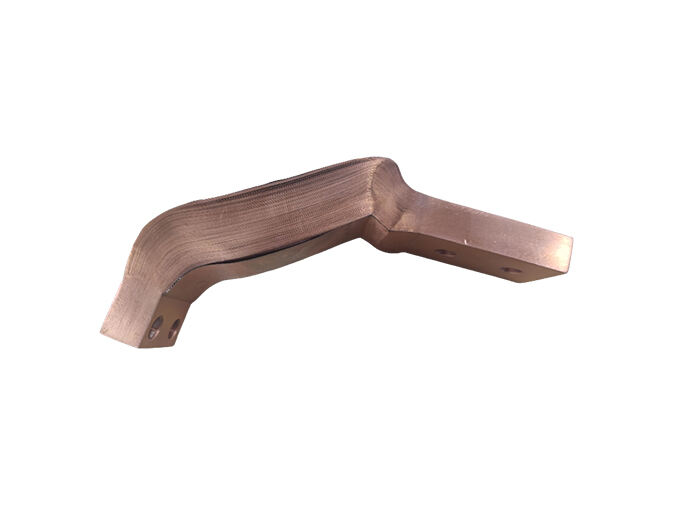Flexible Vs Rigid Busbars
In the electrical engineering world, terms "rigid" and "flexible" busbars might sound like Chinese for a debutant at first. But fear not! This guide is aimed at taking you through the basics and clarify the difference between those major two types of power distribution systems in an easy to understand manner.
Flexible or Rigid Busbars?
Let's start with the basics. Flexible and stiff buses are an important part of a power system to distribute electricity in wide areas inside the building. Just think of them as metal bars that help conduct electricity very efficiently and are obscured behind walls, in the ceilings. These bars are almos always made from either of which is a good conductor, copper or aluminium.
Further Insights: Low Voltage Bus Ducts - Rigid vs. Flexible busbar system
So what exactly does that mean? Non-Rigid busbars resemble the poles for hanging clothes, while Rigid Busbar is similar to sturdy metal rods that are in a straight row all stacked closely together. They are good conductors like these bars that have to carry electricity over a long distance. On the other hand, rigid materials are stiff and find it difficult to bend into those complicated forms needed for many intricate projects. In operation, a stiff busbar must be located within inches of the project it is powering to deliver electricity efficiently.
Flexible busbars, on the other hand, can adapt to almost any shape. That means they can flex and shape to fit in those tight areas, so great for projects with non-linear floorplans. While pliable, flexible busbars retain structural integrity and can deliver power as efficiently as its rigid form.
Advantages of Flexible Busbars
There are many advantages of flexible busbars. Flexible busbars are easy to install, in contrast with solid rigid busbars this can be cutted shaped and adapted which makes it an erector set at your fingertips. This versatility eliminates the need for heavy rigid connections, which allows this more intuitive space saving design. Flexible busbars are often a popular selection for high-voltage applications where saving space is key.
Flexible Busbars that revolutionize Innovation
Flexible busbars have opened up new designs with additional, advance features. Vertical and Horizontal Flexibility: Some versions have even greater flexibility both in vertical planes, such that they are also suitable for installation at different angles and orientations. Others have a special metal housing design that facilitates heat dissipation to reduce the operating temperature by up to 20%.
Safety and Proper use of Flexible Busbars
In addition to their versatility, flexible busbars are also designed for safety. These systems are made from robust materials and come electrically safe, perfect for industrial installations. This greatly reduces the likelihood of electrical failures by eliminating direct connections to existing traditional grounding systems. In addition, its flame retardant cover will be able to prevent the busbars from being damaged when exposed high heat or fire flames.
Flexible busbars usage diese_ranges
Depending on if your are in a new building or renovating, you may decide to get an electrician involved for best busbar placement. The electrician will suggest rigid or flexible busbars according to the specifications of your project and space Availability. After installation, the systems will be tested extensively to ensure that there is uninterrupted flow of electricity.
Quality and service first.
Choosing an adaptable busbar to your project requires due consideration. Choose products that are tested and certified with agencies such as UL, TUV or CSA. Also, shop from well known manufacturers that have good support in case issues do emerge.
Flexible Busbar Applications
Flexible busbars are used in a plethora of electrical applications ranging from data center to power plants and industrial infrastructures. Their safety and adaptability renders diesel generators the choice of setting up electric power outputs in industries where a steady energy source is needed.
In Conclusion
Although flexible and rigid busbars work in the same way, they are physically different materials that offer a completely unique user experience during both installation, use, and maintenance. Flexible busbars surface as the popular choice for their flexibility, speed of installation and reduction in space compared with rigid busbar arrangements. All of these attributes - and protection advantages, also - compel them into assistance when electrical tasks need craftsmanship that is malleable, strong-working, or possibly unfamiliarity with threats.
 EN
EN
 AR
AR
 BG
BG
 HR
HR
 CS
CS
 DA
DA
 NL
NL
 FI
FI
 FR
FR
 DE
DE
 EL
EL
 HI
HI
 IT
IT
 JA
JA
 KO
KO
 NO
NO
 PL
PL
 PT
PT
 RO
RO
 RU
RU
 ES
ES
 SV
SV
 CA
CA
 TL
TL
 IW
IW
 ID
ID
 LV
LV
 LT
LT
 SR
SR
 SK
SK
 UK
UK
 VI
VI
 SQ
SQ
 HU
HU
 TH
TH
 TR
TR
 FA
FA
 MS
MS
 GA
GA
 LA
LA





